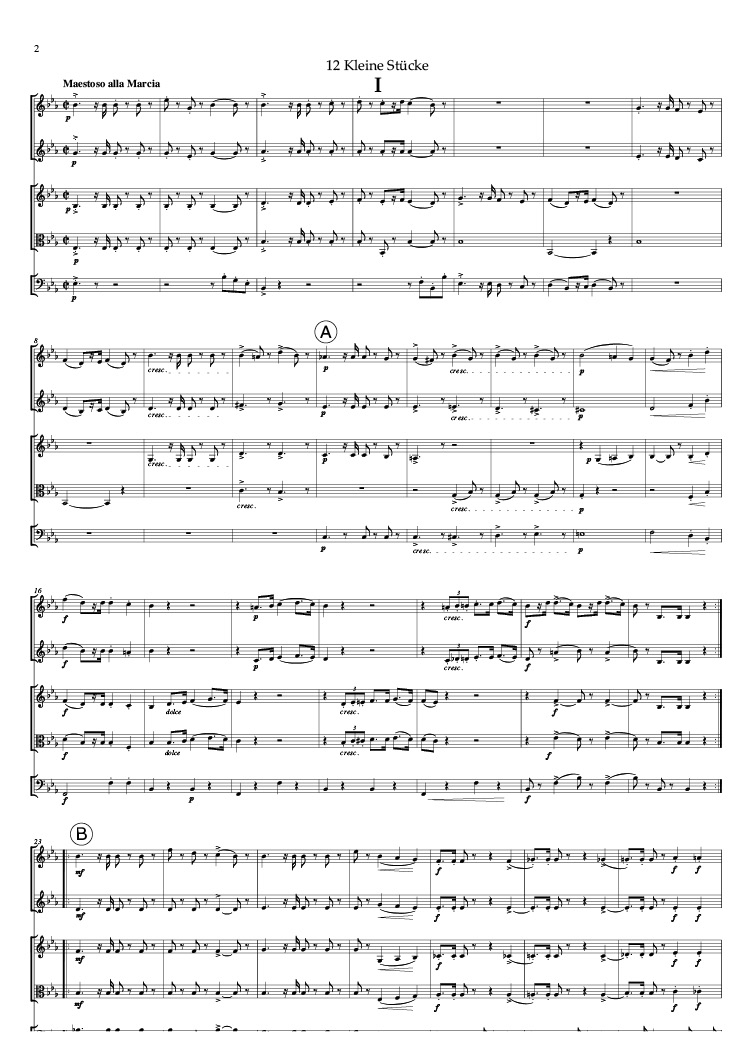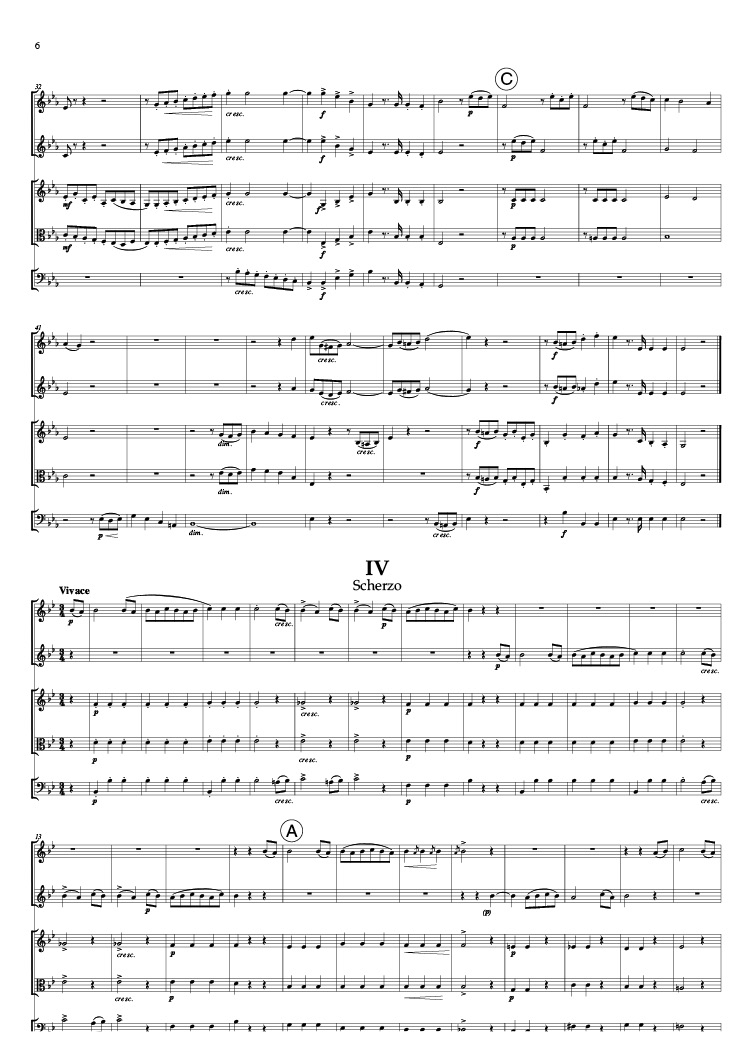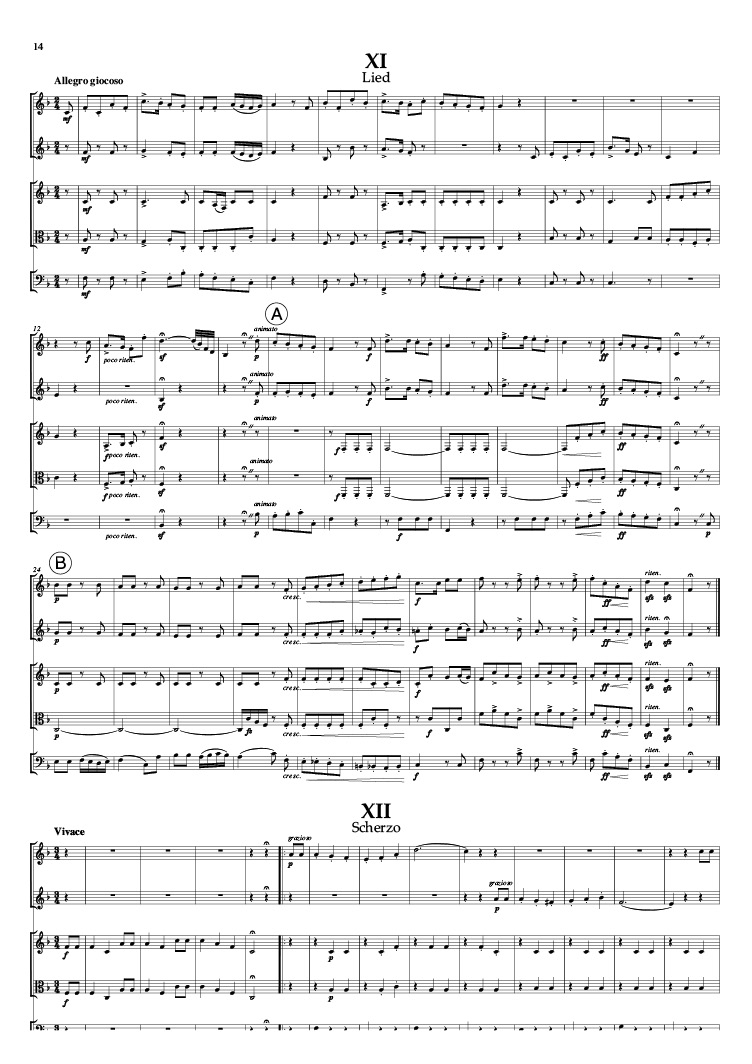
Maurer Morgengruss + 12 kleine Stücke
Difficulty (I-VI): III-IVParts for:
Parts I + II: Cornet in B flat (Trumpet)
Part III: Horn 1 in E flat and F
Part IV: Horn 2 in E flat and F; Trombone
Part V: Bass Trombone (Tuba)
Series: Romantic Brass
Editor: Edward H. Tarr
The violinist composer Ludwig Maurer was born in Potsdam in 1789 and died in 1878 in St. Petersburg. His violin teacher was Carl Haack (1751-1819), Frederick the Great's concertmaster. In 1803 he entered the court orchestra as Royal Prussian Chamber Musician. During the warlike encounters of 1806, in which Napoleon even occupied Berlin, the court orchestra was dissolved, and Maurer traveled northeastward to Latvia. In Riga he came into contact with two of the leading French violinists, Pierre Baillot (1771-1842), formerly professor at the Paris Conservatory and member of Napoleons private orchestra, who was traveling in the Russian empire between 1805 and 1808, and with Pierre Rode (1774-1830), the Tsar's solo violinist. With the latter he spent six months in Mitau (today: Jelgava), studying the French violin style. From this time onwards, Maurer retained close ties with Latvia. Between 1807 and 1858 he gave far more public concerts in Riga than any other. He was "an artist well known and beloved to all". "'The call, 'Maurer is here', would go out in the city, and those music lovers of Riga who were admitted would flock to the musical soirees given by M. in his host's home, together with the best local musicians. He also was happy to take up the baton in the concerts of the Musical Society, spurning its orchestra on to special efforts ..." Maurer then went to Moscow, where on Baillot's recommendation he became the conductor of Count Vsevolozhsky's private orchestra.
In 1817 he left Russia to tour extensively through Germany and finally, in 1820, to Paris. From 1824 to 1832 we find him in Hanover, where as "Royal Hanoverian Concertmaster" he also conducted orchestra concerts and operatic performances, as well as undertaking annual concert tours. In 1833 Maurer returned to Russia, where he remained for the rest of his life. First he resumed his former activity with Count Vsevolozhsky, who was now living in St. Petersburg. Later he became musical director of the French theater there, 1841-62 Inspector of Imperial Orchestras and 1841-71 conductor of the orchestral concerts of the Imperial Concert Society, with the title of "Imperial Russian Conductor" . He was universally respected as a "cultivated, approachable and very industrious person", musically and mentally active until his death.
Ludwig Maurer was one of the best violinists of his time. Although he developed his technique before Paganini's influence could make itself felt, he was capable of many virtuoso tricks. He was the born virtuoso. All of his instrumental works possess a certain lightness and brilliance. As far as his compositions are concerned, the following and others are to be found in modern lexica: a 1st Symphony in F Minor, Op. 67 (1831); a famous Symphonia concertante in A Major for 4 violins and orchestra, Op. 55 (1838); a second Symphony concertante in F Major for 2 violins and orchestra, Op. 56; 10 violin concertos (the 10th dedicated to Joseph Joachim, 1831-1907); 3 clarinet concertos; 6 string quartets, Op. 17 and 28; as well as other chamber music, works and Etudes for violin solo, Op. 39; furthermore stage works (on French German, and Russian texts, such as Aloise, premiered in Hanover in 1828). The works for brass instruments published here cannot be found in any modern lexicon. From 1877 to 1885, the Danish composer Emilio Wilhelm Ramsøe (1837-1895), was a viola player in the orchestra of the Italian theater in St. Petersburg, that is, at the same time Maurer's son was concertmaster there.
Although the origins of these works of Maurer's are still shrouded in darkness, it is common knowledge that Ramsøe and Maurer wrote the first known pieces for brass ensemble. Ramsøe's quartets nos. 1-5, written between 1866-67 and 1879 and published between 1880 and 1885, were intended for a circle of Copenhagen musicians, while his 6th quartet, which has remained in manuscript, was composed for the famous "Kaiser-Cornet-Quartett" of Julius Kosleck (1825-1905) from Berlin. Furthermore, we suspect that Maurer's brass works "Twelve Little Pieces" and an hitherto unknown 13th piece with the title "Morning Greeting" originated either in the circle of Russian amateur musicians around Tsar Alexander II. Nicolayevitch Romanov (1818-1881, reigned from 1855), or else in the brass chamber music class established at the St. Petersburg Conservatory by its first professor of cornet, Wilhelm Wurm (1826-1904, professor from 1869). In any case these brief, witty, entertaining pieces were not published during Maurer's lifetime.



